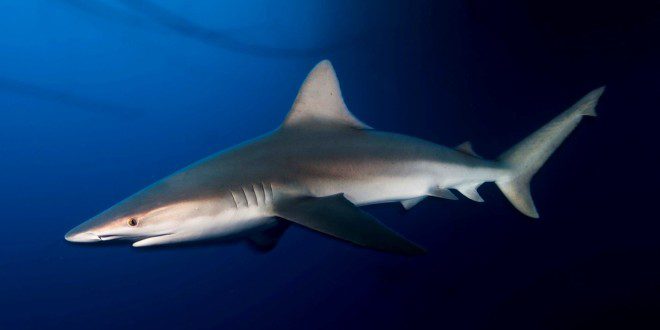Although the sandbar shark – in danger of extinction – lives in the eastern Mediterranean from Israel to Cyprus and Egypt, the Atlantic Ocean and the Indo-Pacific – it has been sighted near the coast of Italy, according to experts at the University of Haifa.
The shark (Carcharhinus plumbeus), a species of requiem shark, is distinguishable by its very high, triangular first dorsal fin and interdorsal ridge.
Sandbar sharks usually have heavy-set bodies and rounded snouts that are shorter than the average shark’s snout. Its upper teeth have broadly uneven cusps with sharp edges. Females reach sexual maturity around the age of 13 and males around 12. Females can grow to two to two-and-a-half meters lone and males up to 1.8 meters. Its body color can vary from a bluish to a brownish grey to a bronze, with a white or pale underside. Sandbar sharks swim alone or gather in sex-segregated schools that vary in size.
True to its name, it is commonly found over muddy or sandy bottoms in shallow coastal waters such as bays, estuaries, harbors or the mouths of rivers, but it also swims in deeper waters.
Sandbar sharks have been disproportionately targeted by the American commercial shark fisheries in recent decades due to their high fin-to-body weight ratio, they are in danger of disappearing due to overfishing.
In spite of their large size and appearance similar to dangerous sharks such as bull sharks, very few, if any attacks are attributed to sandbar sharks, so they are considered not to be dangerous to people. As a result, they are considered one of the safest sharks to swim with and are popular sharks for aquariums.
For the first time after seven years of research, marine scientists at the university’s Leon Charney School of Marine Sciences found the sandbar shark near Sicily. Sharks tagged in Israel came to Cyprus and Egypt, but they never had evidence of a long journey to Italy, said Dr. Aviad Sheinin, head of the predatory section at the university’s Morris Kahn Marine Research Station who has been checking their DNA, tracking and tagging such sharks since 2014.
.
Last May, the investigators tagged a shark they named Hagai with a satellite tag. According to Sheinin, there is very little information on the movement of the species in the Mediterranean. Since they have reached as far as Italy, he said, conservation efforts of the species will require addressing issues of legislation and enforcement in a wider number of countries.
The shortcode is missing a valid Donation Form ID attribute.




